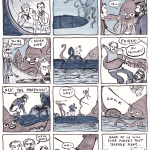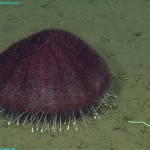
A team of marine biologists, geologists, and oceanographers studying chemosynthetic communities around hydrocarbon seeps aboard the Deep Slope Expedition 2007 research vessel RV Ron Brown successfully recovered a time-lapse camera from waters more than 2000m deep in the Gulf of Mexico.
“Life goes on in chemosynthethic communities when we’re not there,” says Dr. Ian MacDonald of Texas A&M University Corpus Christi. “We have to wonder what happens outside of the brief snapshot in time when we were there exploring.”
Dr. MacDonald will use the information “to understand how the physical environments change over time–how seeps increase or decrease in activity and how animals behave when they are not disturbed by the bright lights and noise generated by submersibles.”
The time-lapse camera had been deployed for two weeks in a deep water site called Atwater Valley, but previous models were on the seafloor for up to one year. The camera mechanism is designed by Aquapix, a partnership between electrical engineer Mark Roberts and Dr. MacDonald. The housing and mechanism is unique because they time lapse images are panoramic, with a 180 degree view, the digital snapshots are high resolution, and the release mechanism for the camera is acoustically activated from the vessel waiting on the surface above to retrieve it.
Friendly wagers were placed among the researchers and crew trying to guess the rising time to the surface. MacDonald bet 55 minutes, and won a round of drinks for the crew when the ship arrives in Galveston. It took 49 minutes for the unweighted camera to rise from 2000m below.
You can learn more about the camera from daily logs on June 19 and June 29 at NOAA Office of Exploration’s website for the Deep Slope Expedition.






So do we get a DSN exclusive of the time-lapse video?!
If the camera takes a series of six images every minute for two weeks that 121000 images to download and process. Might take a little while…, even for Dr. Ian.